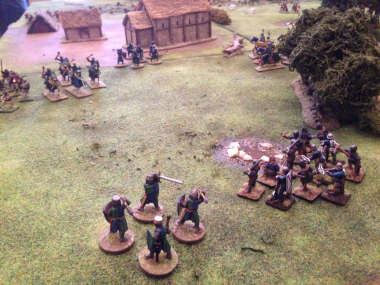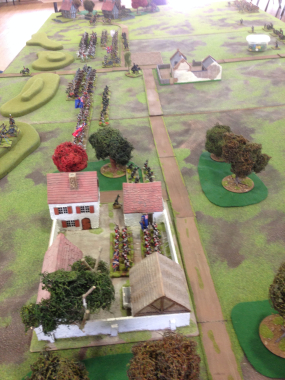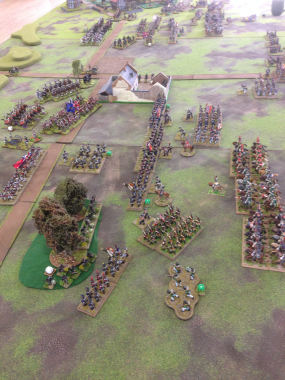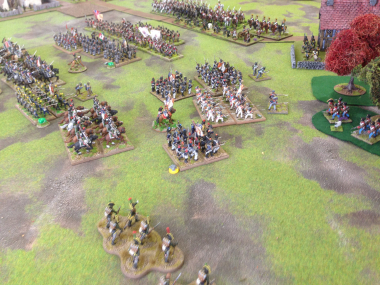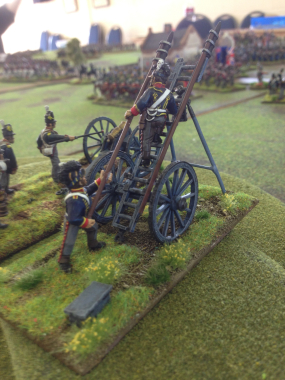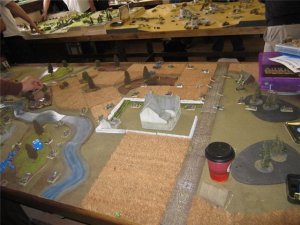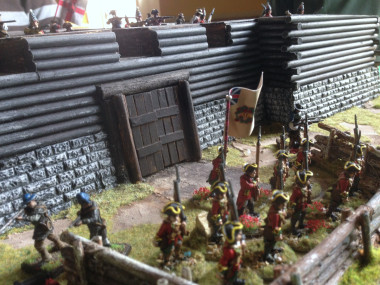
Defend the Fort!
Most of our club games are played on a basic games table with the minimum of scenery. When you are playing Napoleonics, it makes sense to leave room for maneuver. However, Muskets and Tomahawks is a skirmish game that looks and plays better with more scenery and we are very lucky indeed to have John, who has a superb collection of scenery made for the job. In this weeks game, John excelled himself by bringing a beautifully made fort. The scenario was simple enough. The British had to defend the fort and prevent the French Regulars and Indians from capturing it.
To add a bit of spice, the British were able to send a runner from the fort on the turn of a special card. The runner would be opposed by two French Irregulars and if the runner won the combat, it would trigger a reinforcement column to march to relieve the Fort. Just to add to the excitement, after the first failed attempt, the next runner would receive one shot of covering fire from the fort. If it all sounds a bit familiar, it’s true to say that we did have the ‘Last of the Mohicans’ in mind when we added this extra!
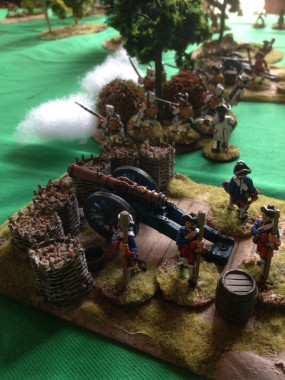
French Artillery
To start the game the French and Indian forces were set up just outside the perimeter of the fort and the British Forces, in the main, were safely inside the fort. However, Pete, the British player, had chosen to keep one unit of Rangers outside the fort to infiltrate the flanks of the attacking French. In addition, just outside the gate of the fort, a barricade was protecting the main gate, so Pete had stationed three artillery pieces here along with a unit of regulars to keep the French at bay.

open fire!
The game started with an diversionary attack by a unit of french regulars, supported by the french militia. This was met by a massive artillery bombardment as well as volley fire and grenades from the fort ramparts! The first French unit was wiped out just leaving an officer to shout encouragement to the next unit to leave the cover of the woods and pick up the siege ladder! The Militia also fell back somewhat discouraged, leaving more than a few of their colleagues wounded at the walls of the fort along with yet another discarded siege ladder.
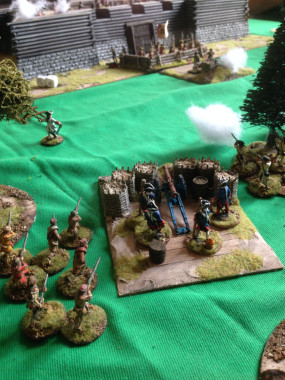
A brave French Officer encourages the next wave!
The British seemed immovable and with their vast superiority in fire power it seemed impossible that the fort could be captured. To add to the French woes, the besieging artillery was largely ineffective, causing no casualties or damage and on the second attempt, the fort runner had fought his way through the French encirclement and British reinforcements were on the way.
Despite the apparent British Superiority in fire power, the Indians had taken advantage of the diversion on the left of the fort and were sneakily making their way to the walls. Using the cover available, they had massed just close enough to the fort to launch a mass attack on both the walls and the forward barricade. At the same time, the French musketry had finally found it’s range and the gunners behind the barricade were struck down leaving this position vulnerable to attack.
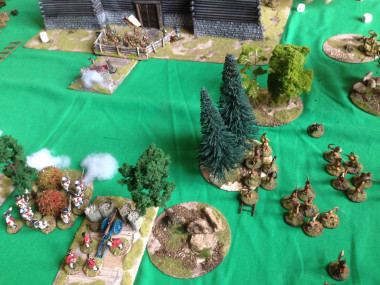
The Indians carefully make their way forward under the cover of the French Attack.
With the Indians threatening the right of the fort and the British Artillery frantically trying to reload, the French once again launched an assault, this time the irregulars managed to pick up a discarded ladder and began to climb the walls, fighting their way into the fort. Seeing their moment, the Indians surged forwards and catching the British facing the wrong way, massacred the units behind the barricade! The gate was now in Indian hands!
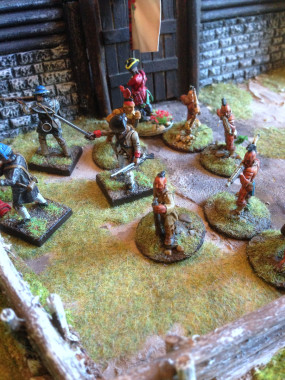
Indians take the gate!
This was the turning point! With the Indians trying to force the gate, the French assault on the walls continued pushing the British defenders back into the fort. This allowed the Indians to force a second breach of the walls and a torrent of angry Redskins and French besiegers poured into the fort. As if to rub salt into the British wounds, an attempt to fire the fort mortar at short range resulted in the shell going straight up and landing back down on the mortar itself, killing all of the crew….The British were forced to strike their colours before the much needed reinforcements could arrive.
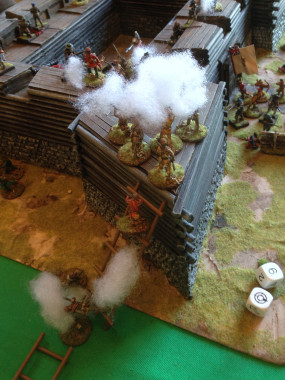
The French Gain the Battlements!
So victory for the French – Indian alliance! A most enjoyable game made all the better for the superb scenery. If you haven’t tried Muskets and Tomahawks, I’m very happy to recommend it as a very enjoyable skirmish game and a good excuse to start collecting figures form the French Indian wars and also the American War of Independence.

muskets & tomahawks from Studio Tomahawk.

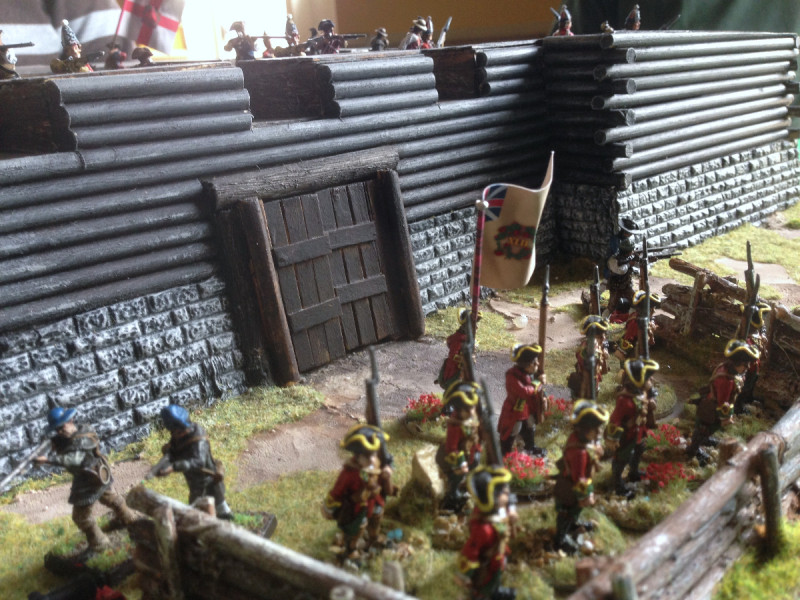
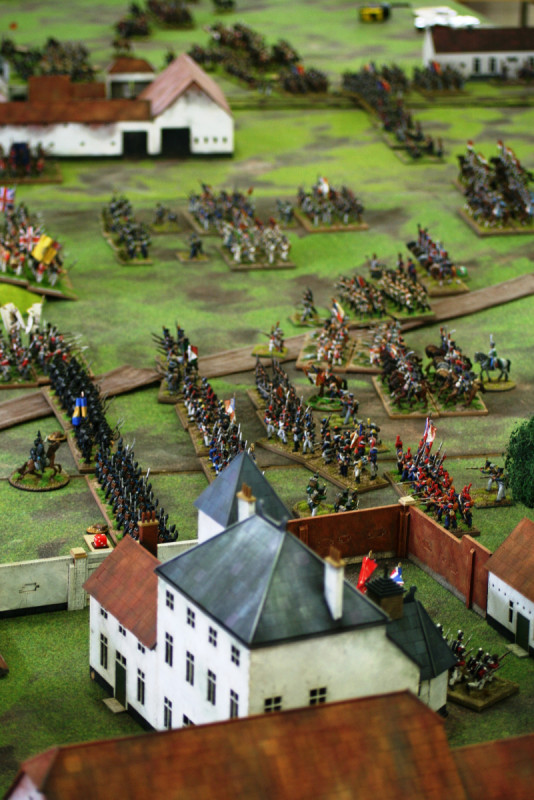

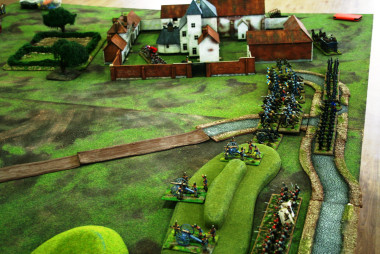
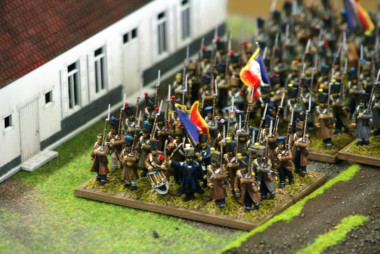

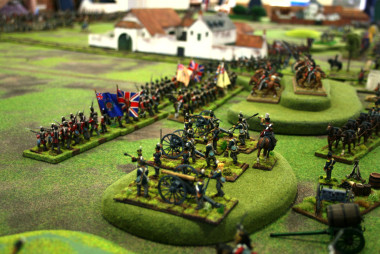
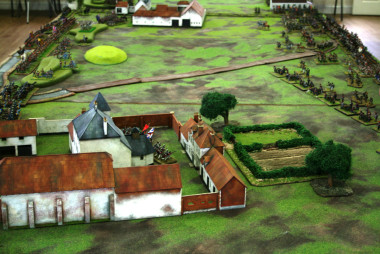

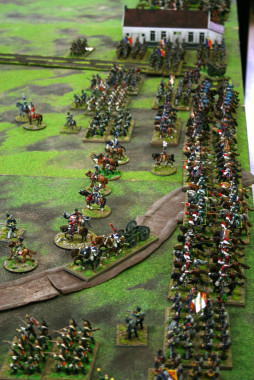
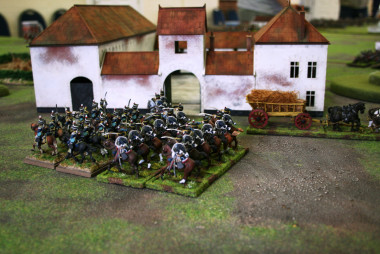
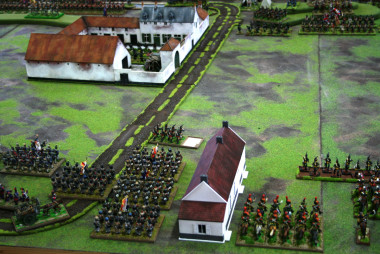
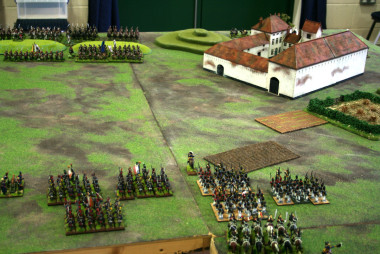
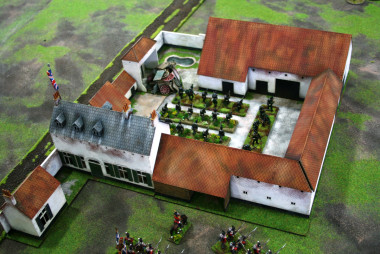
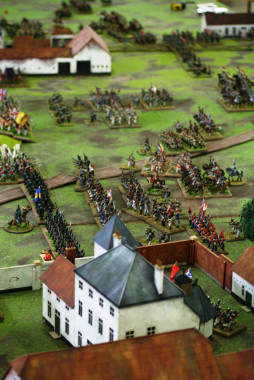
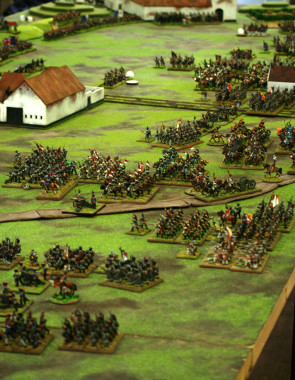


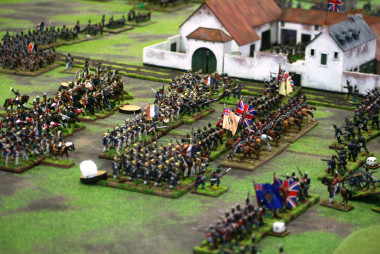
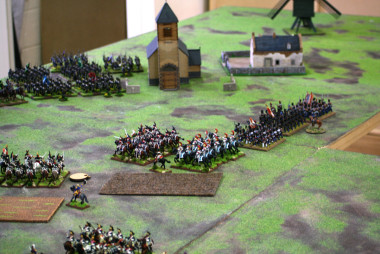
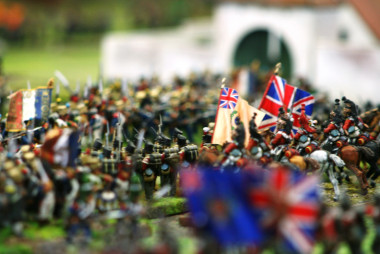
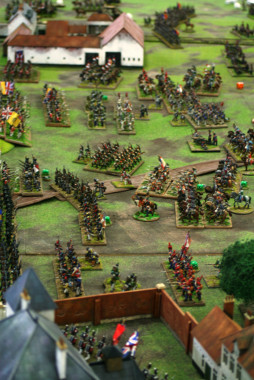
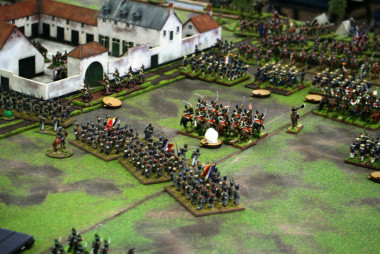


 Playing Black Powder with Napoleonic figures continues to be my obsession, with no sign of ‘game fatigue’ appearing. I still play at least once a fortnight at the club, only recently having a break every other week to play Muskets and Tomahawks. The other guys at the club are quite amused at our adherence to this rule set and period and we are now known collectively as the ‘Black Powder’ lot! That said, our ‘gang’ is growing and whereas it used to be just two of us slugging it out over a table, there are now at least six ‘hardcore’ members of the sub club, so to speak, with a few more that are happy to join in and even more that come over to check our battle progress during the evening.
Playing Black Powder with Napoleonic figures continues to be my obsession, with no sign of ‘game fatigue’ appearing. I still play at least once a fortnight at the club, only recently having a break every other week to play Muskets and Tomahawks. The other guys at the club are quite amused at our adherence to this rule set and period and we are now known collectively as the ‘Black Powder’ lot! That said, our ‘gang’ is growing and whereas it used to be just two of us slugging it out over a table, there are now at least six ‘hardcore’ members of the sub club, so to speak, with a few more that are happy to join in and even more that come over to check our battle progress during the evening. gether, you take the rough with the smooth. That’s not to say we haven’t modified some of the Black Powder Rules to suit our style of gaming. The two Napoleonic Supplements, Albion Triumphant 1 & 2, introduced some new rules and ideas, some of which we have adapted, some not. The beauty of Black Powder is that it allows this, provided everyone is clear at the start of the game.
gether, you take the rough with the smooth. That’s not to say we haven’t modified some of the Black Powder Rules to suit our style of gaming. The two Napoleonic Supplements, Albion Triumphant 1 & 2, introduced some new rules and ideas, some of which we have adapted, some not. The beauty of Black Powder is that it allows this, provided everyone is clear at the start of the game.



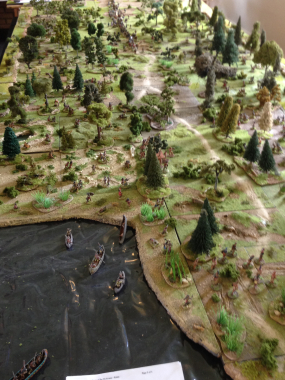
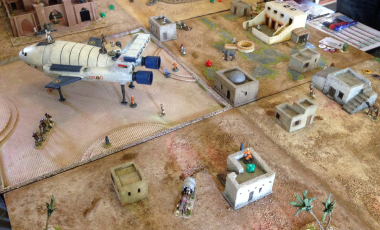
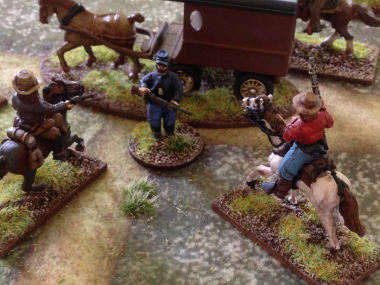
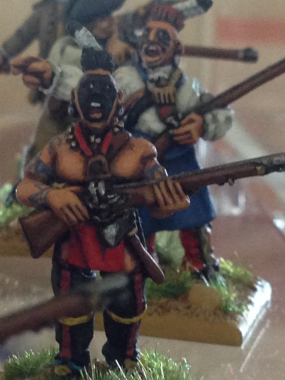

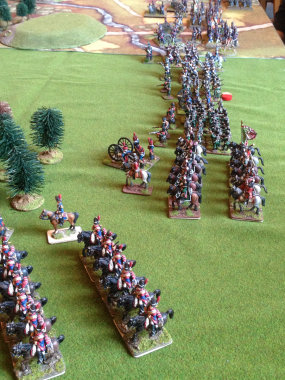
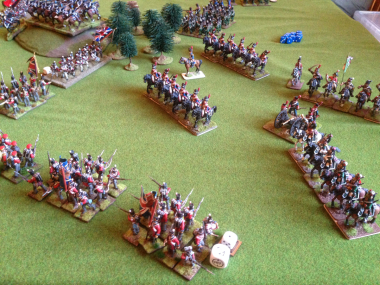

 I’ve been blathering on about my Carribean force for sometime now but have yet to use it on the field of battle. There have been two problems; one, the lack of a rules set and more importantly, the lack of an opponent! I started to collect and paint the Trent Miniatures Caribbean figures because I thought they were superb models. The sculpting is of high quality with some really characterful models in the range. Add to that, the uniforms look pretty good and there is plenty of scope for all sorts of variety when putting together a force. The theatre of action, the Caribbean islands in the late 18th Century provides plenty of scope for all sorts of battles, from small scale skirmishes to full on battles, naval landings and sieges. And of course the scenery will be interesting – anything from Plantations to Jungles.
I’ve been blathering on about my Carribean force for sometime now but have yet to use it on the field of battle. There have been two problems; one, the lack of a rules set and more importantly, the lack of an opponent! I started to collect and paint the Trent Miniatures Caribbean figures because I thought they were superb models. The sculpting is of high quality with some really characterful models in the range. Add to that, the uniforms look pretty good and there is plenty of scope for all sorts of variety when putting together a force. The theatre of action, the Caribbean islands in the late 18th Century provides plenty of scope for all sorts of battles, from small scale skirmishes to full on battles, naval landings and sieges. And of course the scenery will be interesting – anything from Plantations to Jungles. Well, as usual, the answer was right in front of me. There is a superb rules set by the very talented Alex Buchel of Studio Tomahawk called ‘Muskets and Tomahawks’ for skirmishes in North America during the 18th Century. I could see immediately that it would be very straight forward to transpose the Caribbean forces over the North American Forces in the rules set and I could use my figures on the wargames table! Luckily there are a few players at my local wargames club that play M & T’s, so I asked one of them, John Grant (or Nice John as he is known locally!) if he would take me through the rules with a practice game. John has a terrific set up with plenty of scenery and AWI figures, so the game was great fun and confirmed my impression that the rules set would transpose to the Caribbean. The next step was to ask if I could use my Caribbean force in a game!
Well, as usual, the answer was right in front of me. There is a superb rules set by the very talented Alex Buchel of Studio Tomahawk called ‘Muskets and Tomahawks’ for skirmishes in North America during the 18th Century. I could see immediately that it would be very straight forward to transpose the Caribbean forces over the North American Forces in the rules set and I could use my figures on the wargames table! Luckily there are a few players at my local wargames club that play M & T’s, so I asked one of them, John Grant (or Nice John as he is known locally!) if he would take me through the rules with a practice game. John has a terrific set up with plenty of scenery and AWI figures, so the game was great fun and confirmed my impression that the rules set would transpose to the Caribbean. The next step was to ask if I could use my Caribbean force in a game!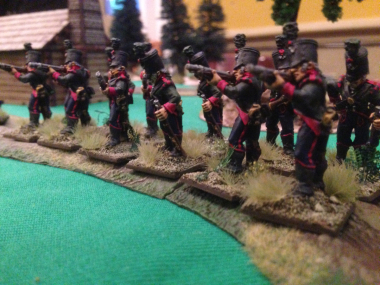
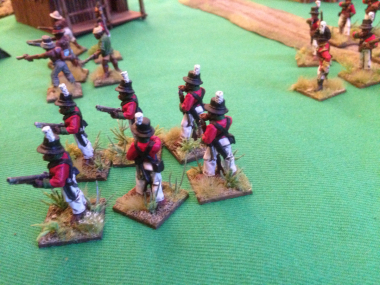

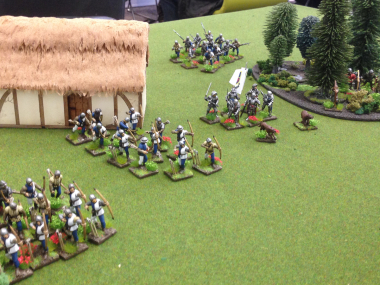

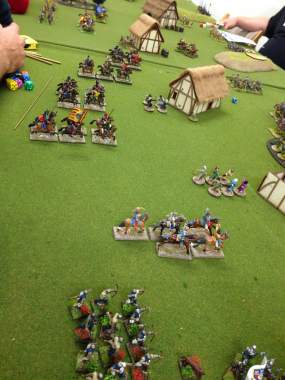
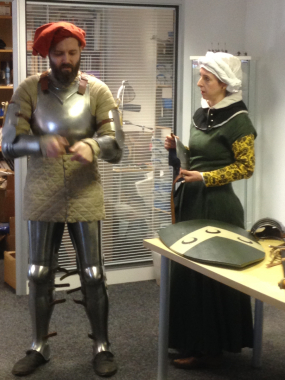
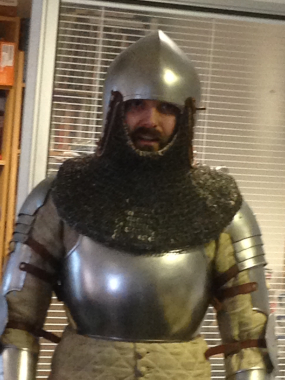

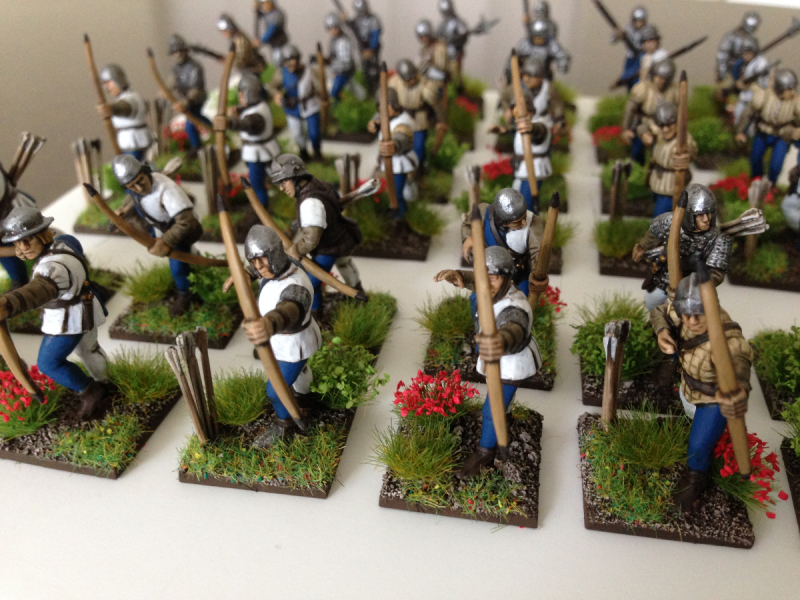
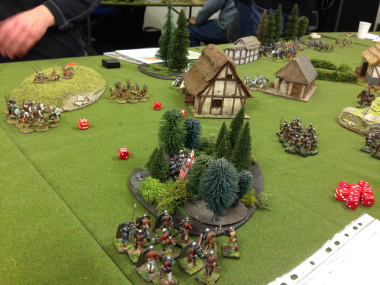
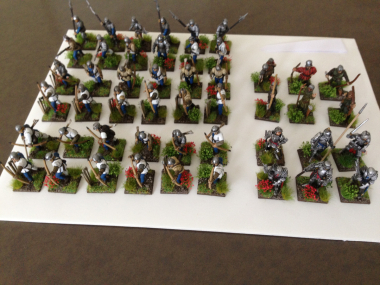


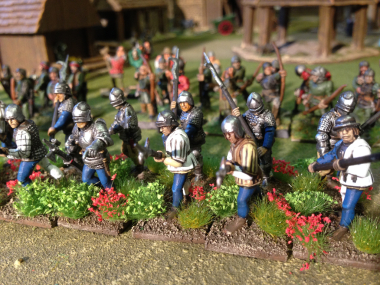 Well that was the question I asked myself when putting together my Lion Rampant retinue. With just 6 men in the unit, an armour value of 1 ( 2 when shot at) and a points value of 2, I couldn’t see why I would bother having these in my retinue. The fact was that I had never heard of a Bidower before, come to that, neither has Wickipedia. A google search revealed the following link, which was sort of useful:
Well that was the question I asked myself when putting together my Lion Rampant retinue. With just 6 men in the unit, an armour value of 1 ( 2 when shot at) and a points value of 2, I couldn’t see why I would bother having these in my retinue. The fact was that I had never heard of a Bidower before, come to that, neither has Wickipedia. A google search revealed the following link, which was sort of useful:


